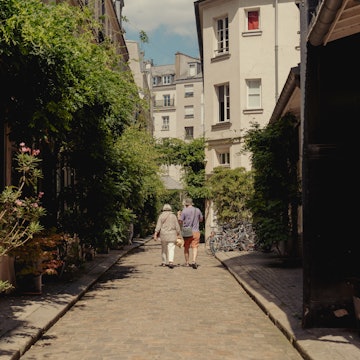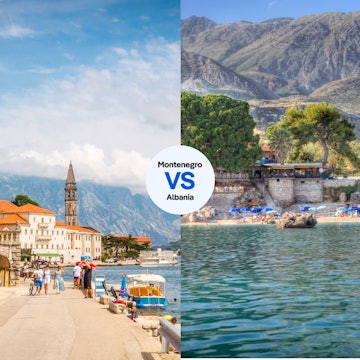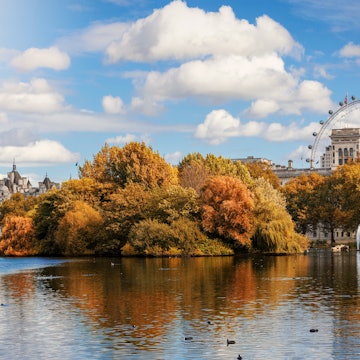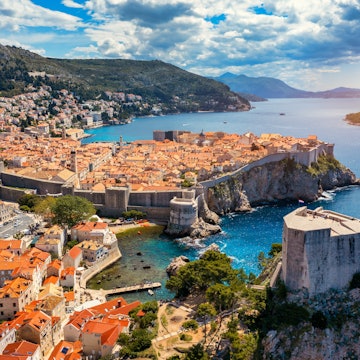

Sunset in Lovćen National Park. TPopova/Getty Images
Montenegro flies a tad under Balkan travelers' radar, but this tiny country's extraordinary battery of alluring landscapes positively hums with visitors at certain times of year.
On the dramatic Adriatic coastline, average daily temperatures hover between 24°C (75°F) and 31°C (88°F) during the period after Easter through September, and sunbathers soak it all in at pleasant beaches of both pebble and sand varieties. Crowds – not yet to the same intensity as nearby Dubrovnik – can surge in the peak of summer.
Amid the mountain peaks, Kolašin and Žabljak host one of Europe's most affordable ski seasons come winter. Both cities can be reached by car, though some mountain roads are inaccessible into May before the snow melts off. Many hotels, restaurants and bars on the coast close their doors during winter, and prices there plummet as well.
Stunning national parks could occupy a slot on any Montenegro itinerary throughout the year, which is rounded out by a full schedule of cultural festivals and annual harvests across the country.

Beaches are abuzz from May to September
Ideal weather in Montenegro from late spring to early fall: Montenegro's high season is high for a reason – ideal weather, wonderful beaches and fully operational infrastructure (bars, restaurants, hotels, tour operators) are the obvious pros. As with many popular summer destinations, this time period is also the most crowded, so finding a parking spot, a perfect patch of sand or affordable accommodations is a challenge. There's good news on the latter, however, as Montenegro remains one of the more affordable beach destinations in Europe.
You can tilt the downsides in your favor by avoiding the highest season on the coast – July and August – without sacrificing optimal weather. June, with an average high of 28°C (82°F), and September, at 26°C (79°F), will still be humming, but prices will be slightly lower. You'll avoid the hottest time of year and still go home bronzed, blissed and buoyant.
Hiking in Montenegro's national parks can be a welcome respite from the swarming beaches of the Adriatic. Blue skies and blooming wildflowers in May only add to the scenery at Biogradska Gora National Park and Lovćen National Park, with average daytime temperatures climbing to around 23°C (73°F). Late spring is also a great time for rafting on the Tara River in Durmitor National Park.
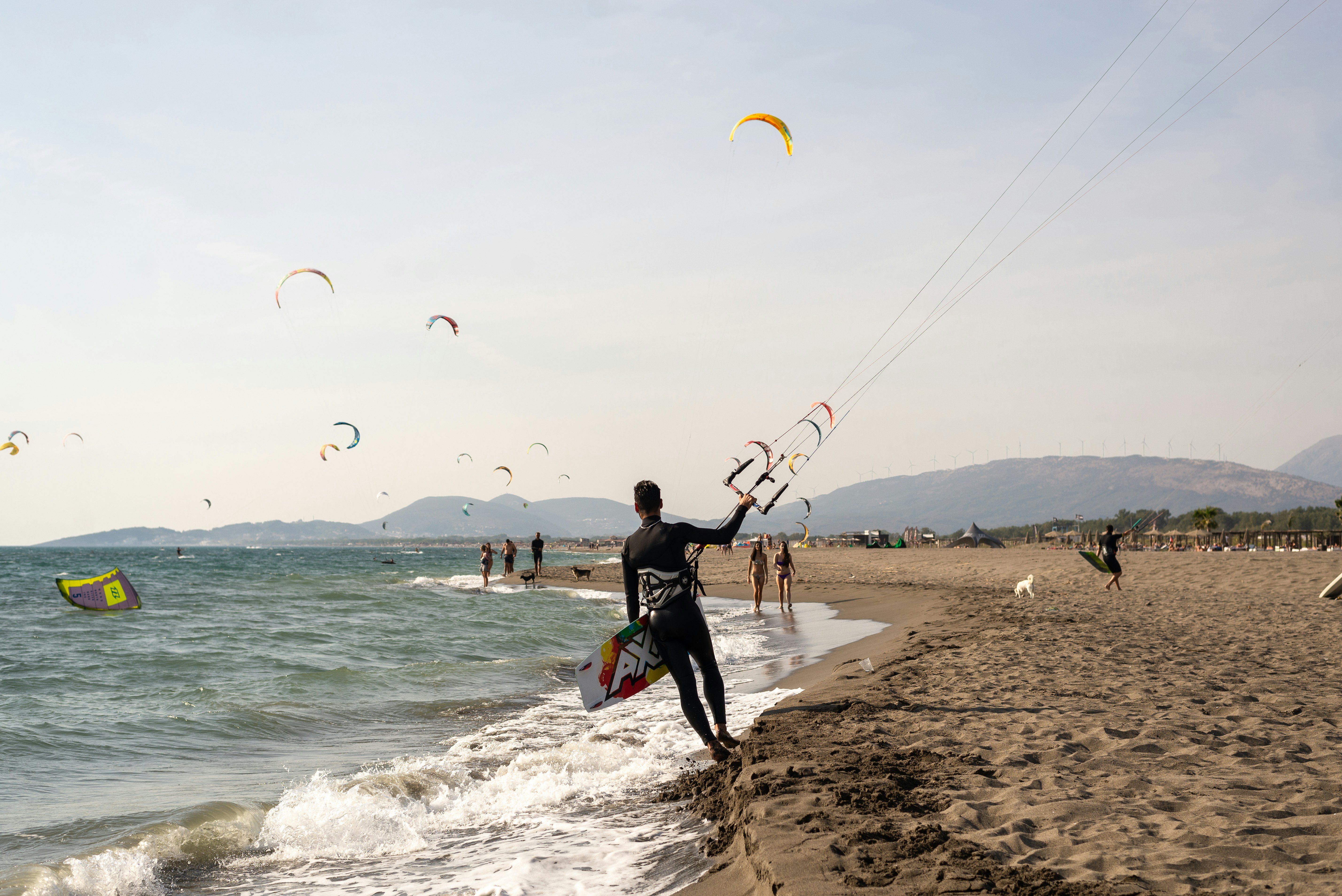
June, July and August bring festivals and kitesurfing
Windy weather on Montenegro's coast in summer: Centinje, Montenegro's charming old capital, is a 40-minute drive inland from Budva, just the right distance for a day trip away from the coastal crowds. It's summer-long FunFest pulls together a laundry list of musical, cultural and gastronomic events. It won't be totally uncrowded, but compared with Budva's Slovenska Plaža, you'll have some elbow room. It's a few degrees cooler too.
The beautiful city of Kotor schedules a cornucopia of well-established arts-related festivals from mid-July to mid-August, nested under the KotorArt umbrella, including Don Branko's Music Days (classical music) and Perast's International Klapa Festival (traditional Dalmatian unaccompanied singing). International companies head to the children's theater festival in early July. Kotor is obviously crowded during this time, but you won't find this level of artistic distraction in other times of the year.
Back at the beach, June and August bring the most reliable winds, when 80% of days are windswept. The longest beach in Montenegro, the 12km (7-mile) Velika Plaža, along the Albanian border outside Ulcinj, is the country's premier kitesurfing destination. But don’t fret if you're there on a calm day – the beach bars and restaurants are some of the country's liveliest.

September and October are the best time for leaf-peeping
Cooling weather in Montenegro in fall: The forests of Biogradska Gora National Park explode in an autumnal glow in September and October. With summer crowds gone, it's a wonderful time for snowshoe-free mountain sports such as hiking and mountain biking before the park closes for its winter hibernation; the mild temperatures – highs between 14°C (57°F) and 18°C (65°F) – are well suited for outdoor fun.
Also in October, Stari Bar, one of Montenegro's most cinematic destinations, goes wild for its annual olive harvest, Maslinijada. Some 10,000 people descend on this tiny walled town outside the far less interesting Bar.

December to April is the best time for skiing
Skiing weather in Montenegro from winter to spring: At 960m (3150ft) above sea level, Kolašin is Montenegro's main mountain resort, home to the country's two best-equipped ski resorts: Kolašin 1450 and Kolašin 1600. Daily lift tickets are as little as €15 (US$17) per day, making these mountains some of Europe's most affordable skiing.
Durmitor National Park, 85km (53 miiles) northwest of Kolašin, is the country's other dependable ski destination, boasting 120 days of snow cover per year. Durmitor offers the most reliable – and cheapest – skiing in the region.
Even better news than the prices: Montenegro's slopes will never feel crowded, as they draw mostly locals. If snow sports are your thing, dress warmly. Average January lows dip well below freezing in these Dinaric Alps.
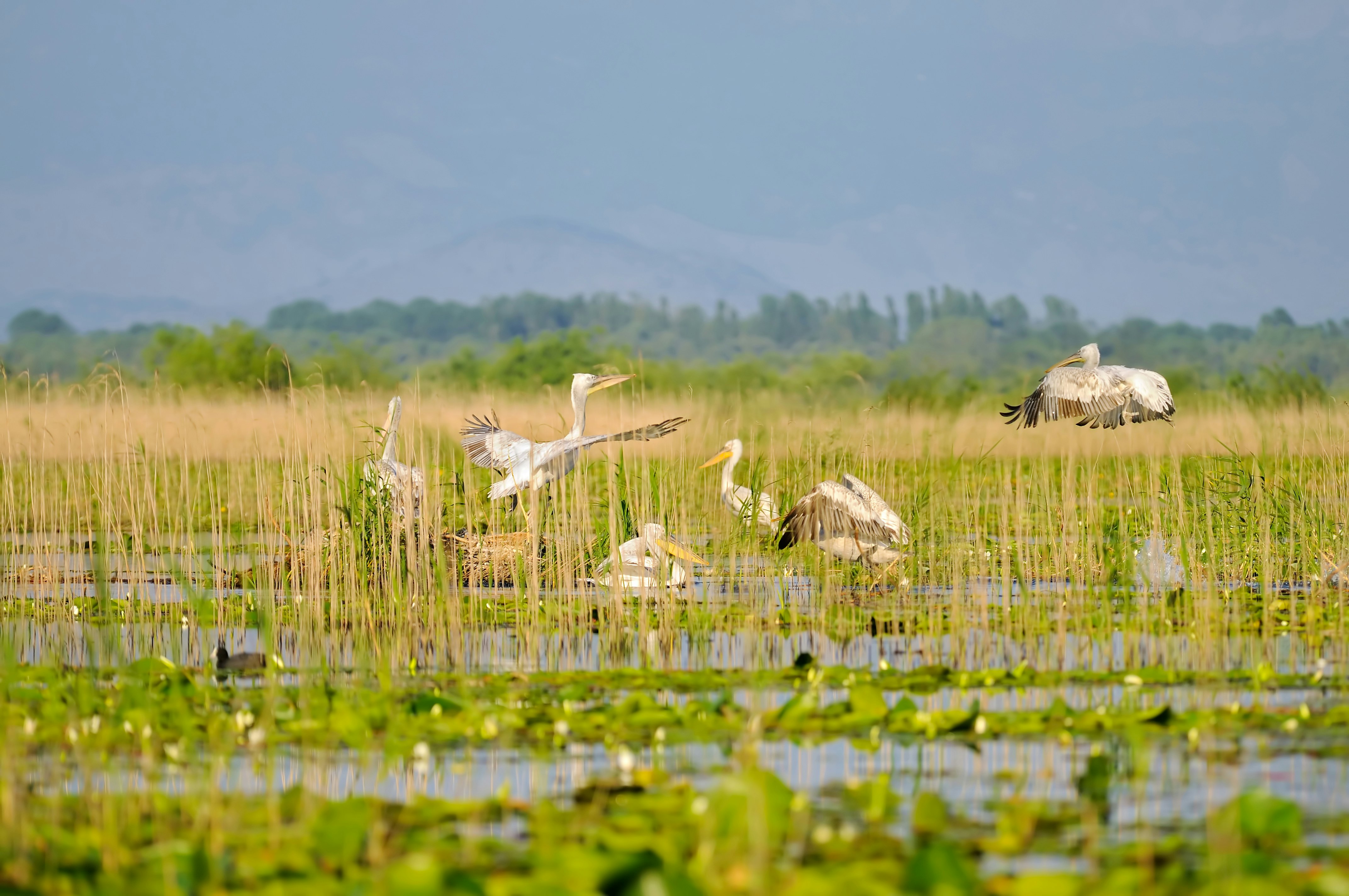
December to February is also the time for bird-watching in Lake Skadar National Park. Fleeing harsh northern winters, migratory waterfowl flock here. Overall, 90% of the park's 270 species are migratory. This is the peak season for spotting the Dalmatian pelican, one of world's heaviest flight birds and the largest member of the pelican family.
February is for Carnival
Cold weather in Montenegro in February: While not in the same league as the crazy Carnival times in Rijeka in Croatia, traditional pre-Lent festivities held along the coast in the once predominantly Catholic towns of Kotor and Tivat include Venetian-style masked balls (for adults and for children), concerts, theater performances and parades. Budva delays its Carnival festivities for warmer weather in April.






